
Economics_-_New_Ways_of_Thinking
.pdf
The Role of
Government in a
Free Enterprise
Economy
Focus Questions
What would happen if government did not enforce contracts?
What is a public good?
In a free enterprise economy, why won’t individuals produce nonexcludable public goods for sale?
What is a negative externality? a positive externality?
Key Terms
contract |
nonexcludable public |
private good |
good |
public good |
free rider |
excludable public |
negative externality |
good |
positive externality |
|
|
contract
An agreement between two or more people to do something.
private good
A good of which one person’s consumption takes away from another person’s consumption.
public good
A good of which one person’s consumption does not take away from another person’s consumption.
excludable public good
A public good that individuals can be excluded (physically prohibited) from consuming.
nonexcludable public good
A public good that individuals cannot be excluded (physically prohibited) from consuming.
Government as Enforcer
of Contracts
Think of what life would be like in a nation without government—no city government, no state government, no federal government. Suppose you own a construction company and regularly purchase supplies from people. On Tuesday, you enter into a contract with a person (an agreement between the two of you to do something). You agree to pay her $1,000 today if she delivers a shipment of wood to you on Friday. Friday comes, and no wood is delivered. Saturday, no wood. Sunday, no wood. On Monday you call the person to ask what happened. She says that she has no intention of delivering the wood to you. “But you took my $1,000. That is theft!” you say. She just laughs at you and hangs up the telephone.
What do you do now? You can’t turn to the police, because police services are part of government, which doesn’t exist. You can’t take the person to court, because the court system also is a part of government.
You can see the need for some institution to enforce contracts. In our society today, government stands ready to punish persons who break their contracts.
Who is better off and who is worse off with government standing ready to enforce contracts? Just about everybody is better off. Only the contract breakers are worse off, because they can no longer break their contracts without at least the threat of punishment.
Could the free enterprise system function without a government to enforce contracts? Most economists believe that it could function, but not nearly as well as it does now. Instead, it would be severely crippled. Without government to enforce contracts, economists argue, the risk of going into business would be too great for many people. (Would you go into business if you knew people could break their contracts with you and not be punished?) Only a few people would assume the high risks of producing such items as television sets, houses, cars, and computers. The economy would be much smaller. Some economists believe that
74 Chapter 3 Free Enterprise
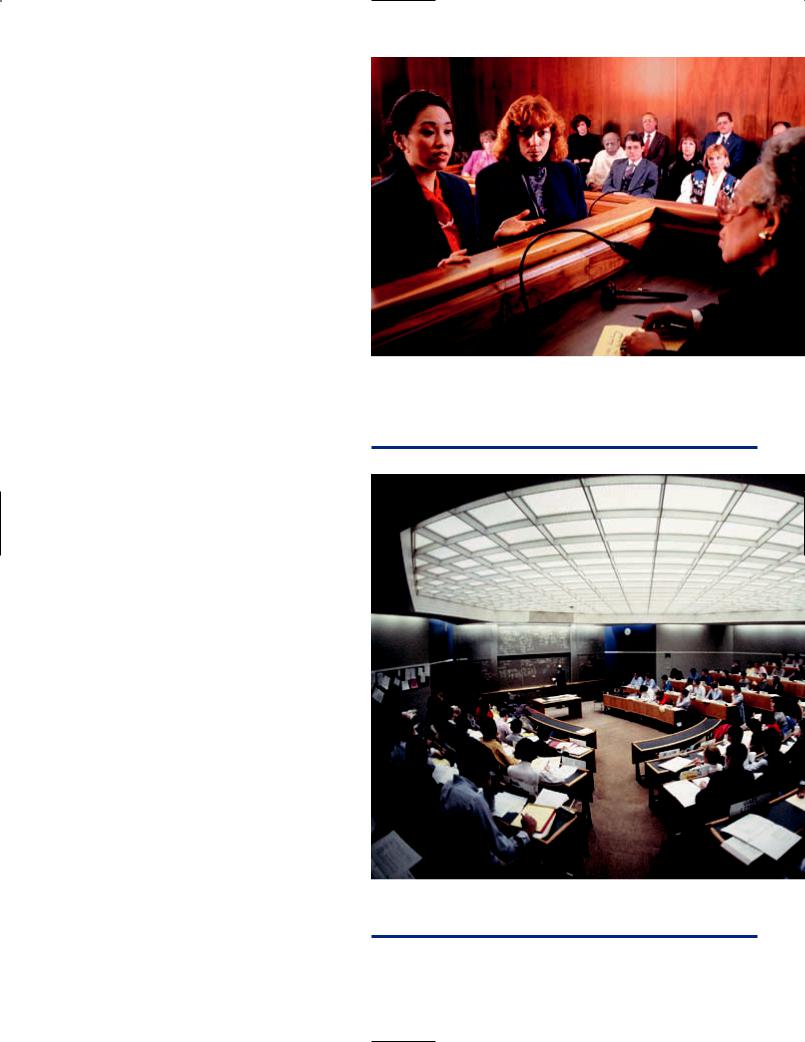
a free enterprise system will be a large, thriving economy when government acts to enforce contracts and a small, sluggish economy when it does not.
Government as Provider of
Nonexcludable Public Goods
Goods are categorized as two major types: private goods and public goods. A private good is a good in which one person’s consumption takes away from another person’s consumption. For example, an apple and a computer are both private goods. If Micala takes a bite of an apple, then much less of the apple is available for someone else to consume. If Bill is working on the computer, then Janey cannot also be on the computer; in other words, Bill’s use of the computer takes away from Janey’s use of the computer.
In contrast, a public good is a good in which one person’s consumption does not take away from another person’s consumption. A movie in a movie theater and a lecture in college are public goods. If the movie is showing in a theater, then the fact that Vernon is watching the movie does not detract from Xavier’s watching the movie. Both men can view the same movie to the same degree. If a teacher in college is lecturing on biology to 30 students, one student’s consumption of the lecture does not take away anything from any other student’s consumption.
Not all public goods are alike, however. They might be excludable public goods or nonexcludable public goods. A public good is excludable if individuals can be excluded (physically prohibited) from consuming it. A public good is nonexcludable if individuals cannot be excluded from consuming it.
Excludable Public Goods
Again, consider the movie in the theater. It is an excludable public good, because movie theater owners can (and do) prevent people from watching the movie. If you go to the movie theater and choose not to pay the ticket price, then the theater owner will not
Free enterprise would be less effective if there were no legal system to enforce contracts. Can you describe a situation in which a trial would be necessary to prevent one business from dealing unfairly with another?
This college lecture is a public good. Is it an excludable or nonexcludable public good?
Section 5 The Role of Government in a Free Enterprise Economy 75
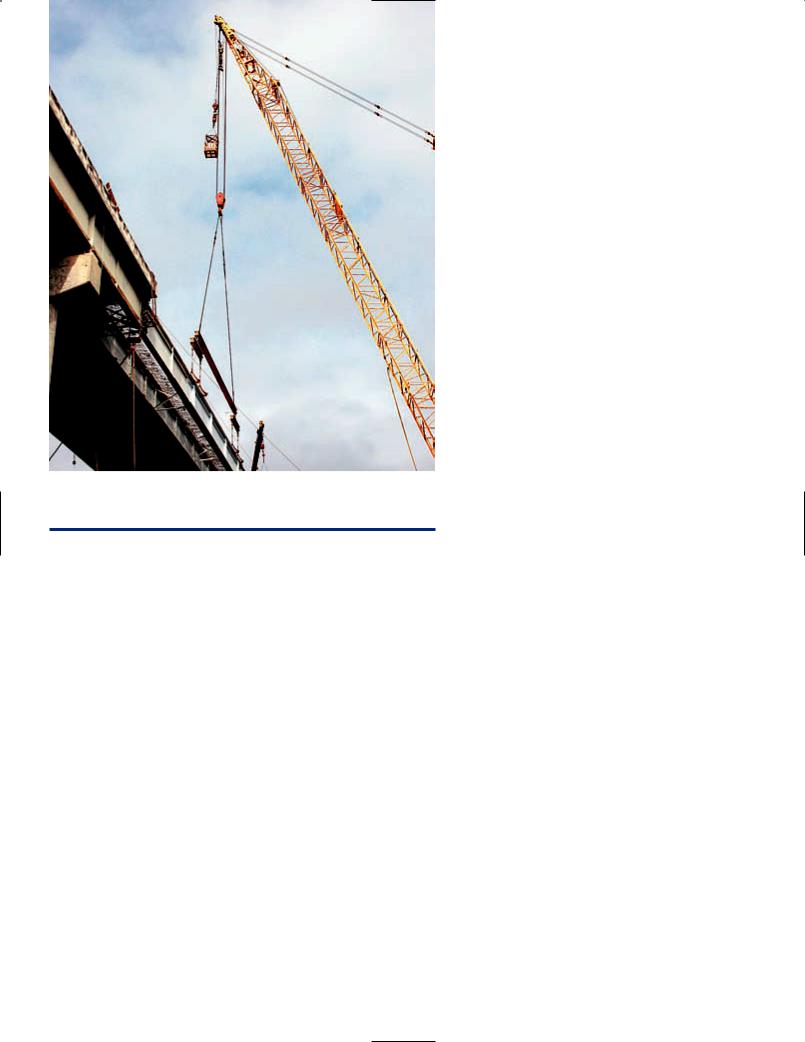
Is a bridge a private good, a nonexcludable public good, or an excludable public good?
In another way, however, national defense is not like a movie or a lecture. The seller of a movie and the seller of a lecture can each exclude people from consuming what they have to sell, but the producer of national defense cannot exclude people from consuming the good it produces. The U.S. government cannot exclude anyone in the United States from consuming its national defense because it is physically impossible, or prohibitively costly, to do so.
For example, suppose an enemy’s missiles are headed for the United States. The U.S. government decides to take action and fire on the incoming missiles. When it fires and destroys the incoming missiles, it protects Yang, who lives in a rather large city, and it is also (automatically) protects many other people. It cannot be any other way.
To make the matter even more stark, suppose that one of the spies of the country that launched the attack against the United States lives in the same city as Yang. The U.S. government may not want to protect this spy from the incoming missile attack, but it is physically impossible to protect some people and not others.
free rider
A person who receives the benefits of a good without paying for it.
permit you to enter the theater. The owner will exclude you from viewing the movie.
What about a lecture in a college classroom? It is also an excludable public good. If you do not get admitted to the college or do not pay your tuition, the college can see to it that you do not sit in the college classroom and listen to the lecture.
Nonexcludable Public Goods
The classic example of a nonexcludable public good is national defense, which consists of missiles, soldiers, tanks, and so on. Suppose that the U.S. government produced a certain amount of national defense. National defense is definitely a public good, because one person’s consumption of it does not detract from another person’s consumption. In this way, national defense is like a movie or a lecture.
Who Will Produce Nonexcludable
Public Goods?
Economists contend that in a free enterprise economy, people will be willing to produce private goods and excludable public goods, but no one will want to produce nonexcludable public goods. Why not? Because once a nonexcludable public good is produced, no one will pay for it. People will not pay for something they cannot be excluded from consuming.
Suppose a company builds a dam to stop the flooding on people’s lands. After the dam is built, representatives of the company ask the people if they want to buy the dam’s services (flood prevention). Each person says,“The dam is already in place, I am benefiting from it, and there is no physical way you can exclude me from benefiting from it. So why should I pay?” Economists call persons who receive the benefits of a good without paying for it free riders.
76 Chapter 3 Free Enterprise
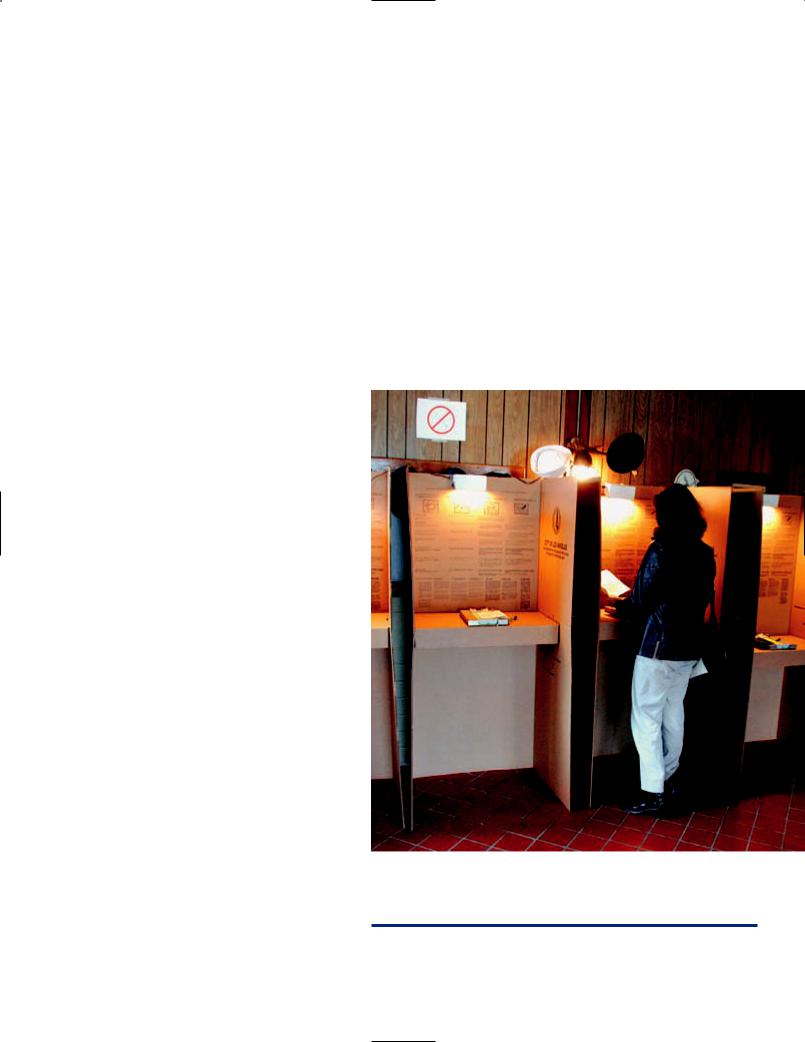
People know that they usually cannot get others to voluntarily pay for a nonexcludable public good, so they decide not to produce it. (Looking back, we can now see that the company that produced the dam in our example would probably never produce the dam in real life.) In contrast, though, people in a free enterprise economy will be quite willing to produce and offer to sell private goods and excludable public goods. First, all private goods are excludable. If you do not pay for an apple, computer, car, or book, then you do not get the good; you are excluded from it. If you do not pay for a movie or lecture, you do not get to consume these excludable public goods. In short, people in a free enterprise economy will produce those things that they can withhold from buyers if they do not get paid for producing them.
able public goods, and how much of these goods, it should provide. In the U.S. system of government, one way people communicate what nonexcludable public goods, and how much of these goods, they want is through the political process.
U.S. citizens have the right to vote, and they can influence what government does through the ballot box. For example, suppose the majority of the people want the U.S. government to provide less instead of more national defense. They will likely vote for politicians who voice this same preference and vote against politicians who do not share their preference. U.S. citizens also have the right to lobby their elected representatives directly, by writing letters or talking to the representatives in person.
The Political Process
A free enterprise economy will produce private goods and excludable public goods, but it will not produce nonexcludable public goods. Suppose, though, that people still want nonexcludable public goods, such as national defense or flood protection. If the free enterprise economy will not produce these goods, who will?
The government will provide nonexcludable public goods and pay for them with taxes. Many economists argue that the government should provide nonexcludable public goods because no one else will. The framers of the Constitution recognized the legitimate role of government in providing nonexcludable public goods, such as national defense, in the Preamble:
We, the People of the United States, in Order to form a more perfect Union, establish Justice, insure domestic Tranquility, provide for the common defence, promote the general Welfare, and secure the Blessings of Liberty to ourselves and our Posterity, do establish this Constitution for the United States of America. (Emphasis added.)
You might wonder how people communicate to their government what nonexclud-
As you know, scarcity prevents us from producing all the goods we want. How can you voice your opinion as to which nonexcludable public goods the government should produce?
Section 5 The Role of Government in a Free Enterprise Economy 77
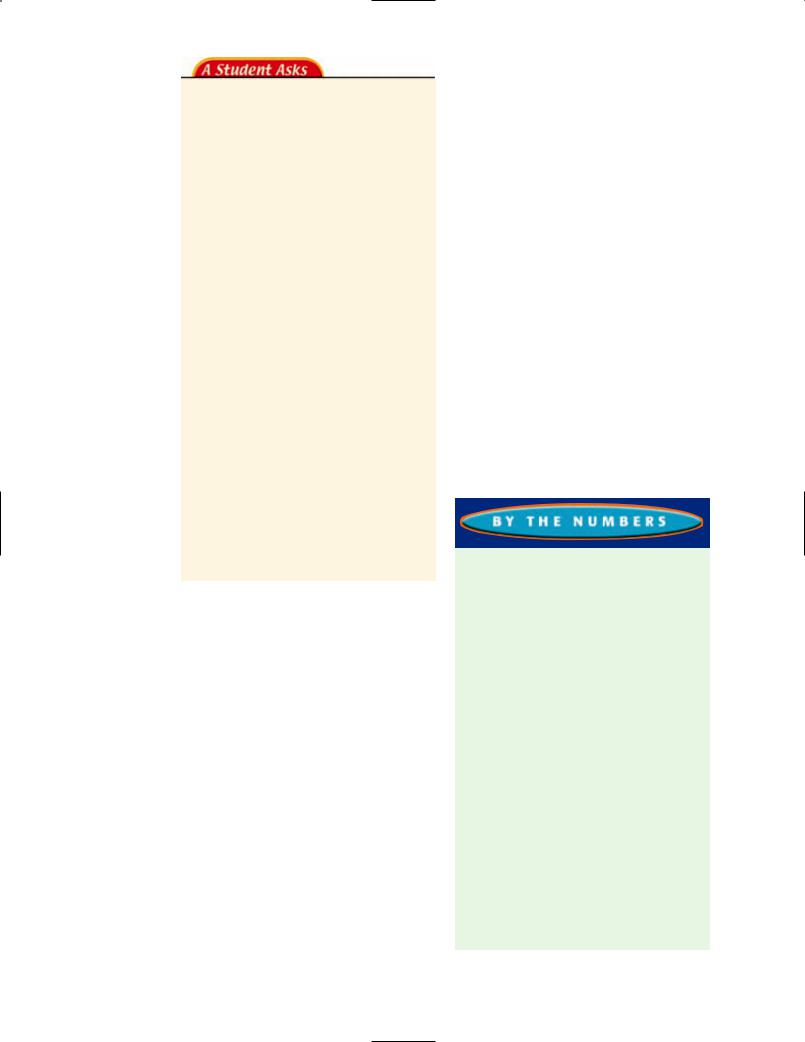
negative externality
An adverse side effect of an act that is felt by others.
positive externality
A beneficial side effect of an action that is felt by others.
QUESTION: I am used to thinking that any good the government provides is a “public good,” but that thought is wrong, isn’t it?
ANSWER: Yes, it’s wrong. Remember, we are talking here about three kinds of goods: (1) private goods, (2) excludable public goods, and (3) nonexcludable public goods. A free enterprise economy will produce both private goods (shirts, shoes, computers) and excludable public goods (movies in movie theaters, music at a rock concert). What a free enterprise economy will not produce is a nonexcludable public good. So, if nonexcludable public goods are going to be produced, they must be produced by government. However, it does not follow that government will necessarily restrict itself to producing only nonexcludable public goods. For example, the U.S. government is involved in delivering mail, building roads, collecting Social Security taxes and writing out checks to Social Security recipients, and much more. None of these things fall into the category of a nonexcludable public good.
Externalities
Suppose it is 3 a.m., and you are fast asleep. Suddenly, you awaken to the sounds of a radio blasting away. You get up, open the window of your bedroom, and realize that the loud music is coming from your neighbor’s house. Your neighbor is taking an action—playing the radio loudly—that has an adverse side effect on you. Economists call this adverse side effect a negative externality, or a negative third-party effect.
 The owners of a house rarely mow their lawn or cut their shrubbery. The people who live in the houses nearby complain that not only is this property not kept up and therefore unpleasant to look at, but the property also lowers the value of their own houses. One neighbor, who lives across the street, says, “I need to
The owners of a house rarely mow their lawn or cut their shrubbery. The people who live in the houses nearby complain that not only is this property not kept up and therefore unpleasant to look at, but the property also lowers the value of their own houses. One neighbor, who lives across the street, says, “I need to
sell my house, but I’m going to have a hard time doing it because the people across the street don’t keep up their property. No one wants to live across from an eyesore. I will probably have to lower the price of my house before anyone will start to think about buying it.” Undoubtedly, the owners of the property that is not kept up are acting in a way that adversely affects their neighbors. The adverse side effect is a negative externality.
Externalities are not always negative. For example, Erica Richards is a beekeeper, who lives near an apple orchard. Erica’s bees occasionally fly over to the orchard and pollinate the blossoms of the apple trees, in the process making the orchard more productive. In this situation Erica takes an action— keeping bees—that benefits another person, the orchard owner. Because Erica’s beekeeping activity results in an externality that benefits someone else, it is referred to as a positive externality, or a positive thirdparty effect.
In the last chapter, we mentioned that the
Wall Street Journal and the Heritage Foundation annually rank countries according to how much or how little economic freedom and free enterprise exists in a country. The rankings are on a scale of 1 to 5; the closer a country’s score is to 1, the more free enterprise it has. Here are the scores for the United States in the years 1995–2005. As you can see, the degree of free enterprise in the United States has not changed much during this period.
Year |
Score |
1995 |
1.99 |
1996 |
1.94 |
|
|
1997 |
1.88 |
1998 |
1.89 |
1999 |
1.89 |
2000 |
1.84 |
2001 |
1.78 |
2002 |
1.84 |
2003 |
1.86 |
2004 |
1.85 |
2005 |
1.85 |
78 Chapter 3 Free Enterprise
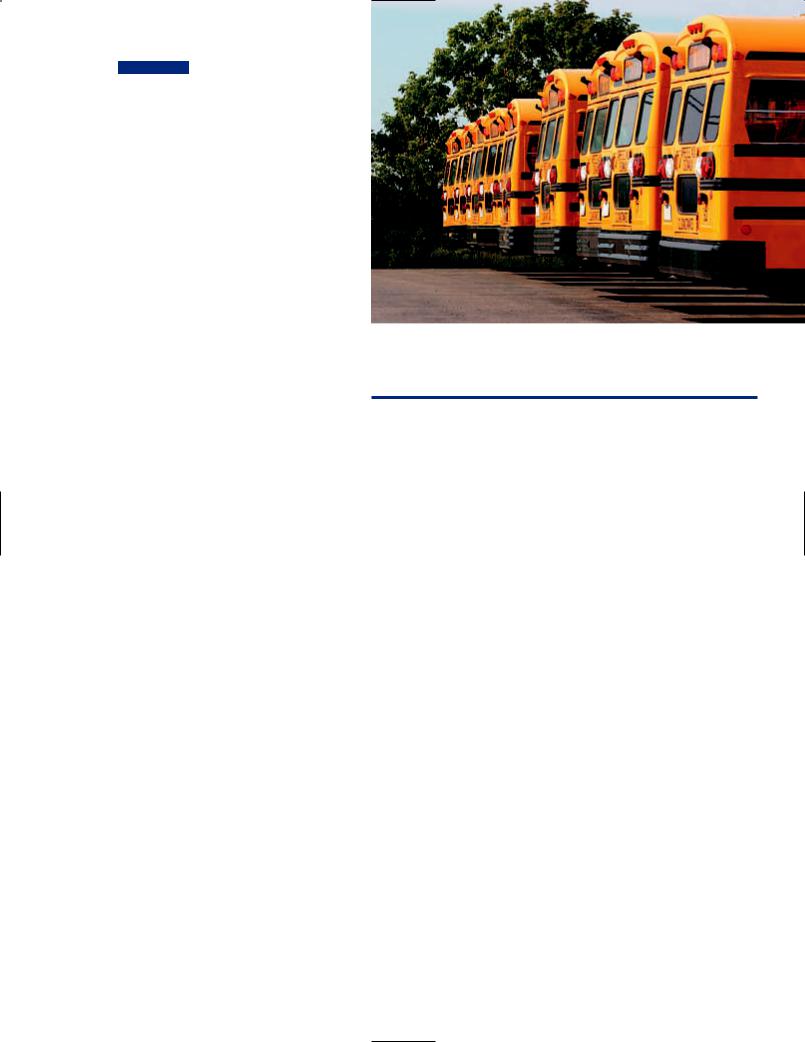
Yolanda visits a physician and is inoculated against polio. Now she can be sure that she will not become sick with polio. Yolanda’s actions also benefit other people: People who come into contact with Yolanda are protected from getting polio from her. As far as the community as a whole is concerned, Yolanda’s inoculation against polio is a positive externality.
Government and Positive
Externalities
Some people argue that education generates positive externalities. They say that when you attend school, you not only learn things that will directly help you in life and in the workplace, but you also become a better citizen and a more informed voter. Becoming a better citizen and a more informed voter ends up benefiting more people than just yourself.
Let’s analyze your own case. You are in high school taking this economics course. Because of the course, it is hoped, you will become more knowledgeable about economics issues than you would have been otherwise. One day, you are listening to two politicians running for the U.S. Senate from your state; they are debating some economics issues on television. One politician makes inaccurate statements on almost all the issues, while the other accurately portrays the economics issues. You decide to vote for the politician who is accurate on the issues, because you feel she will more likely end up promoting economic policies that are good for the United States.
Your informed vote increases (by a tiny percentage) the probability that the politician who understands economics will get elected. If she is elected, whom did you help? You helped yourself, no doubt, but you also helped all the other people who will now benefit by having a person knowledgeable about economics, instead of an uninformed person, shape government policy. In this case, your education produced a positive externality.
Some people argue that because your education can help other people, these other people ought to pay something for the ben-
Buses, classrooms, books, and teachers’ salaries all contribute to the thousands of dollars required each year to provide you with an education.
Should other people have to pay for your education? Why?
efits they derive from your education. One solution might be to have the members of society pay taxes to support the schools you attend. In other words, because the public benefits from your education and the education of other persons like you, it should pay toward that education. The public school system is a result of this thinking.
Persons who attend public schools do not directly pay for the education they receive (although they indirectly pay if their parents pay property taxes). Instead, their education is paid for with taxpayer money. That is, the education of public school students is subsidized. Some people argue that government should subsidize all of the activities that generate positive externalities for society at large.
Government and Negative
Externalities
If you are on the receiving end of a negative externality—if you are awakened at 3 a.m. by loud music, or the smoke a factory is emitting is getting into your lungs—you will probably feel that negative externalities are bad. But what can be done? Some people argue that it is government’s duty to minimize the “bad” in society—in other words, to reduce the negative externalities.
Section 5 The Role of Government in a Free Enterprise Economy 79

WhyDoes |
||
???- |
||
McDonald’s |
||
Put |
Hash |
|
|
inHalf |
|
Browns |
||
SizedBags? |
||
Almost half the population of the United States lives in 39
metropolitan areas. Most of the people who live in those metropolitan areas have fairly long commutes to work. Although 13 percent of all commuters spend 45 minutes or more in their cars each day, it is not uncommon for many commuters in major metropolitan areas to spend 11/2 to 3 hours in their cars each day commuting to and from work.
Try to think of people spending 45 minutes or more each day driving to work as a business opportunity. How could an entrepreneur—a person who has that special talent for searching out and taking advantage of new business opportunities —respond to these commuters?
Some entrepreneurs realized that people who spend at least 45 minutes each day in a car have plenty of time to listen to a book being read to
them, so they started producing books on tape. Listening to a book on tape has become an important part of the way many commuters pass their time. Also, a satellite radio in the car gives drivers much
of what they want on a long drive—music without the interruption of commercials.
McDonald’s, the fast-food franchise, responded to long commutes by making sure that its food can be eaten in a car. For example, McDonald’s places its hash browns in a half-sized paper bag with the top sticking out so that drivers can eat with one hand and
drive with the other. McDonald’s also offers super-sized sodas with containers that fit easily into traditional car cup holders. Other fastfood franchises have started offering sandwiches in bread pockets or tightly wrapped paper so that drivers can easily and comfortably eat and drive without any mess.
The rush to produce a cell phone may have been motivated partly by the desire of entrepreneurs to come up with a product that people with long commutes were likely to buy. Other entrepreneurs have been coming up with
new uses for the cell phone. For example, you can now take photos with a cell phone, as well as play music, watch a music video, play a video game, and check your e-mail.
As wages and salaries rise in real terms, the
value of time rises, too. A person who earns $100 an hour finds that his or her time is more valuable than a person who earns $30 an hour. Entrepreneurs realize that when the value of time rises people want to economize on time. Microwave ovens, computers, and cell telephones are all products that help people reduce the time it takes to complete a given task. Can you think of other relatively new products that help people economize on time?
Government can do so in three principal ways: through the court system, regulation, and taxation.
The Court System Suppose a firm near where you live is emitting smoke and pollutants into the air. As far as you are concerned, the polluted environment is a negative
externality. You think you should be able to breathe unpolluted air, so you sue the firm. Obviously, the firm will hire a lawyer to counter your suit. In the end, a court will decide who has the right to do what. In other words, does the firm have the right to emit smoke and pollutants into the air, or do you have the right to breathe unpolluted air?
80 Chapter 3 Free Enterprise
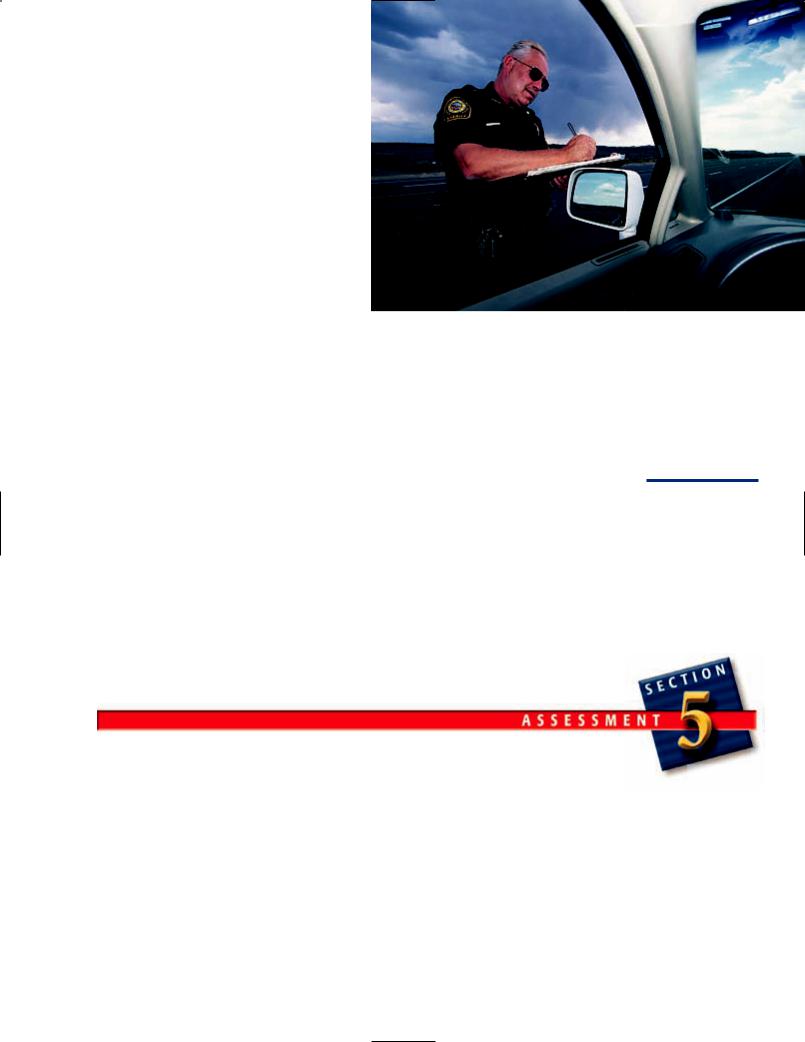
Regulation Sometimes government creates regulations to deal with negative externalities. For example, most states require car owners to meet pollution standards, and government often limits the amount of pollution that factories can emit into the air. Government may also deem it illegal to dump chemicals into rivers and lakes.
Taxation Suppose a business firm is producing steel. As a by-product, pollutants are discharged into the air through a smokestack. Instead of imposing an environmental regulation on the steel-producing firm to clean up the air, government decides to impose a tax. For every ton of steel produced, the firm has to pay $100 in taxes.
As a result of the tax, the business firm will find it costlier to produce steel. The firm is likely to produce less steel, which means fewer pollutants discharged into the air. In other words, the tax on steel indirectly reduced the amount of negative externality (pollutants in the air) by making the production of steel more costly.
We have to be careful in our analysis, though. Taxation, like regulation, sometimes comes with unintended consequences. For example, let’s say that in year 1, the automobile industry pays no taxes. In year 2, government places a tax of $500 per car on the auto industry. In other words, for every new car a firm produces, it must pay the government $500 in taxes. Do you think the auto industry will produce more cars in year 1 or
year 2? The correct answer is year 1, all other things remaining the same. Taxes of the sort described here raise the cost of producing and selling cars, and car firms react by producing fewer cars.
At this point, you might point out that fewer cars mean less pollution. This statement overlooks something important, though. Although fewer new cars are produced and purchased, people may simply drive their old cars longer, and old cars emit more pollution than new cars. Thus, the tax on the production of new cars reduces the number of new cars on the road compared to the number of old cars. In this case, if miles driven do not change, we can expect more, not less, pollution from cars. Taxation, like regulation, does not always have its intended effect.
What negative externality is represented in this photograph? How does the government attempt to minimize this negative externality?
Defining Terms |
Reviewing Facts and |
|
1. Define: |
Concepts |
|
a. |
free rider |
2. Identify each of the fol- |
b. |
contract |
lowing as a public or a |
c. |
private good |
private good: (a) a pair |
d. |
public good |
of shoes, (b) sunshine, |
e. |
excludable public |
(c) a pen, (d) a pizza, and |
|
good |
(e) national defense. |
f. |
nonexcludable public |
3. Why won’t a private busi- |
|
good |
ness firm produce a |
g. |
negative externality |
nonexcludable public |
h. |
positive externality |
good? |
4.How are nonexcludable public goods paid for?
5.Explain how taxes can be used to deal with negative externalities.
Applying Economic
Concepts
6.Give an example of a setting in which a free rider is present.
Section 5 The Role of Government in a Free Enterprise Economy 81
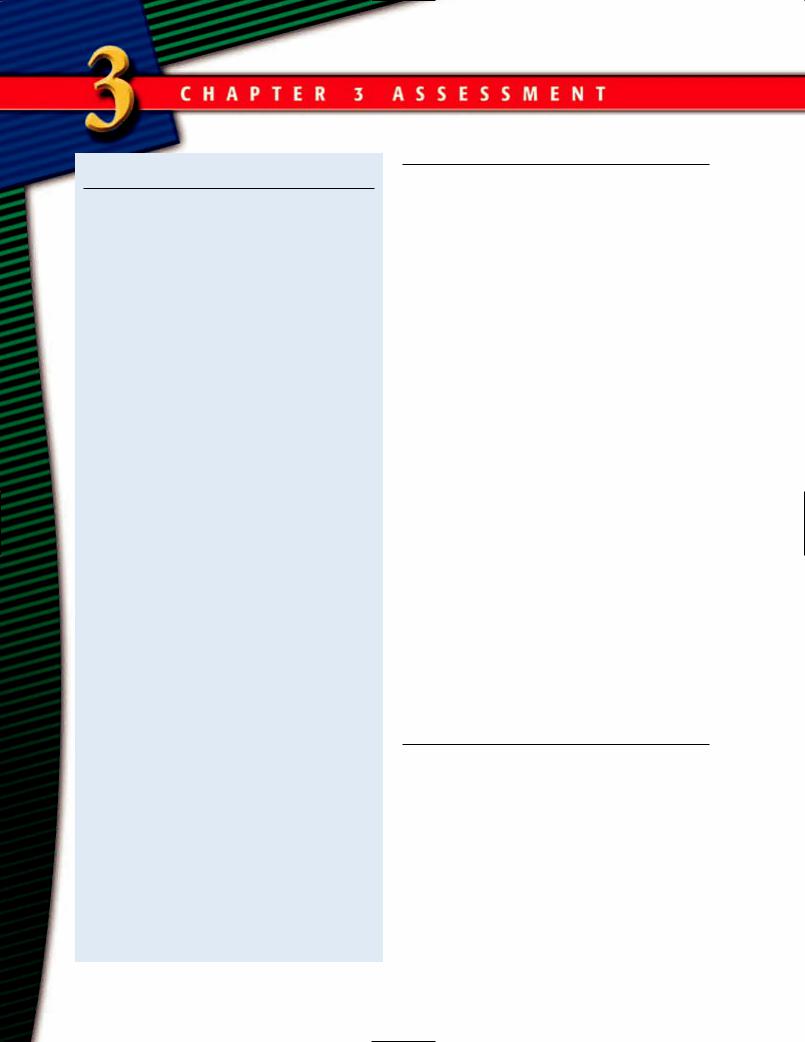
Chapter Summary
Be sure you know and remember the following key points from the chapter sections.
Section 1
In a free enterprise economy, business firms will produce the goods that consumers want.
Five major features define free enterprise: private property, choice, voluntary exchange, competition, and economic incentives.
Section 2
Profit is the money left over after the costs of production are paid.
Profits and losses are signals to business firms.
Section 3
An ethical economic system allows individuals to choose their occupations, produces goods and services preferred by buyers, rewards (or punishes) producers according to how well (or poorly) they respond to buyer preferences, and does not limit individual freedom in making choices.
Section 4
The prospect of great profit motivates entrepreneurs to assume the risks inherent in entrepreneurship.
Section 5
One of government’s roles in free enterprise is to enforce contracts.
A public good is a good in which one person’s consumption does not take away from another person’s consumption.
A free enterprise economy will not produce nonexcludable public goods because no one will pay for them.
Many believe that government should provide nonexcludable public goods and adjust for externalities.
Economics Vocabulary
To reinforce your knowledge of the key terms in this chapter, fill in the following blanks on a separate piece of paper with the appropriate word or phrase.
1.The price of a good times the number of units of the good sold equals ______.
2.A(n) ______ is something that encourages or motivates a person toward an action.
3.______ relates to principles of right and wrong, morality and immorality, good and bad.
4.Any good that is owned by the government is considered ______.
5.A(n) ______ is a person with a special talent for searching out and taking advantage of new business opportunities, as well as for developing new products and new ways of doing things.
6.If a product’s total cost is greater than total revenue, the firm incurs a(n) ______.
7.One reason a private business firm will not supply a nonexcludable public good is because it cannot collect payment from ______.
8.A(n) ______ is an agreement between two or more people to do something.
9.A good of which one person’s consumption does not take away from another person’s consumption is called a(n) ______.
10.A computer is an example of a(n) ______ good.
11.A(n) ______ is a beneficial side effect of an action that is felt by others.
Understanding the
Main Ideas
Write answers to the following questions to review the main ideas in this chapter.
1.How is the question “How will goods be produced?” answered in a free enterprise economy?
2.Explain how voluntary exchange can make individuals better off.
3.What are the five major features of a free enterprise economy?
4.Calculate the profit or loss in each of the following situations (TR stands for total revenue, and TC stands for total cost). Be sure to put a minus
(–) in front of a loss figure.
82 Chapter 3 Free Enterprise
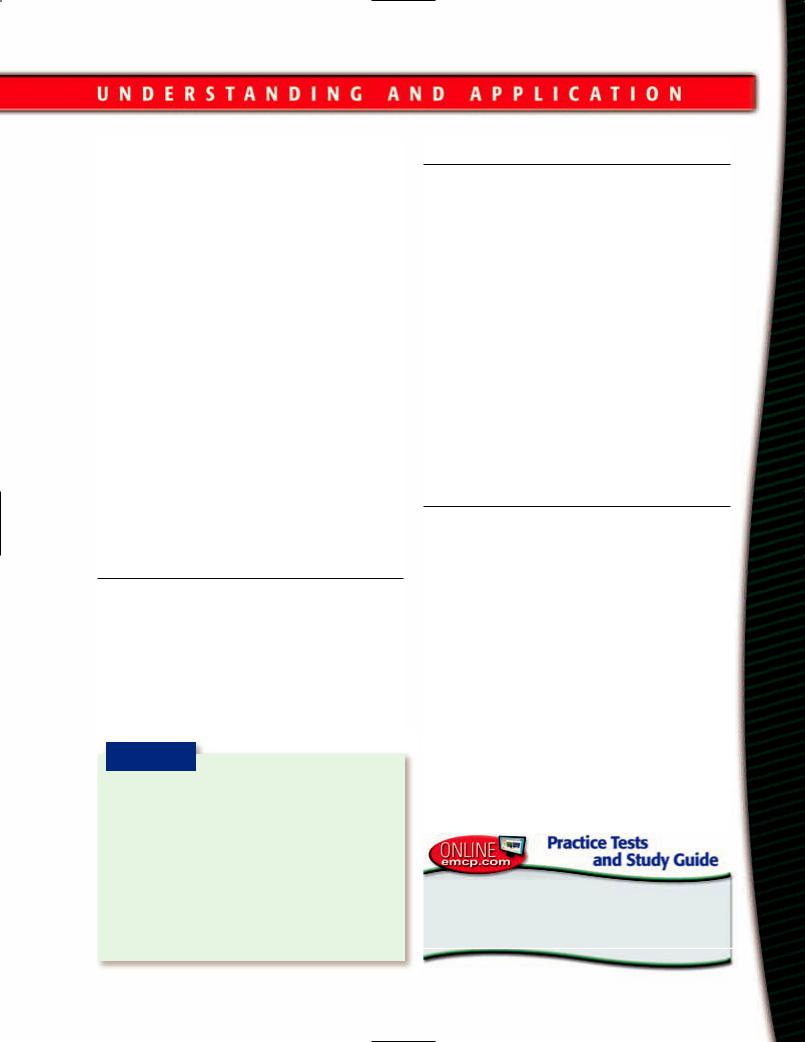
a.TR = $400; TC = $322
b.TR = $4,323; TC = $4,555
c.TR = $576; TC = $890
d.TR = $899,765; TC = $456,897
5.Company Z produces men’s clothes. For the past 18 months, the company has been taking a loss. What is the loss “saying” to company Z? Stated differently, what message should be coming through loud and clear to company Z?
6.An economist would say that profit attracts resources. What does this statement mean? You may want to give an example to illustrate your point.
7.What do entrepreneurs do?
8.According to supporters of free enterprise, what should government do? Why should it do these things?
9.What does the circular flow diagram illustrated in Exhibit 3-2 show, and how is it useful?
10.Identify and explain the three ways government may deal with a negative externality.
11.Justify the public school system on positive externality grounds.
Doing the Math
Do the calculations necessary to solve the following problems.
1.For each letter (A through H) in Exhibit 3-4, provide the correct number or dollar amount.
2.A business firm earns $5,000 profit on 1,000 units of a good that it sells for $6.99 each. What is the average cost of the good?
E X H I B I T 3-4
|
Quantity |
|
|
|
|
|
|
Price |
produced |
Average |
Total |
|
|
||
and sold |
cost |
|
cost |
Profit |
|||
$10 |
100 |
$ |
4 |
|
A |
|
B |
$15 |
C |
$ |
7 |
$ |
700 |
$ |
800 |
|
|
|
|
|
|
|
|
$12 |
10 |
$ |
10 |
$ |
100 |
|
D |
|
|
|
|
|
|
||
E |
F |
$50 |
$1,000 |
$ |
2,000 |
||
|
|
|
|
|
|
|
|
$ 4 |
G |
$ |
3 |
|
H |
$ |
100 |
|
|
|
|
|
|
|
|
Working with Graphs and Tables
1.Look back at the circular flow diagram in Exhibit 3-2 and answer the following questions.
a.Where do households get the funds to pay for the goods and services they buy from businesses?
b.Where do businesses get the funds to pay for the resources they purchase from households?
c.Where does the government get the funds to provide benefits to businesses and households?
2.Look at the circular flow diagram in Exhibit 3-2. Suppose you are a member of the household sector, so you have to pay taxes to the government. Your total tax bill is $100. Now suppose you sign your name on a $100 bill and give it to the government. Can you determine any way that the same $100 bill could ever be back in your hands again? Explain.
Solving Economic Problems
Use your thinking skills and the information you learned in this chapter to find solutions to the following problems.
1.Analysis. “Some mechanism is necessary to decide where resources will be used in an economy. Free enterprise is such a mechanism.” Explain.
2.Analysis. Five features of free enterprise were discussed in this chapter. If you had to pick the most important two features, which two would you pick? Explain your answer.
3.Cause and Effect. In an earlier chapter you read that “It is not from the benevolence of the butcher, the brewer, or the baker, that we expect our dinner, but from their regard to their own interest.” What is the cause of our getting our dinner?
Go to www.emcp.net/economics and choose Economics: New Ways of Thinking, Chapter 3, if you need more help in preparing for the chapter test.
Chapter 3 Free Enterprise |
83 |
